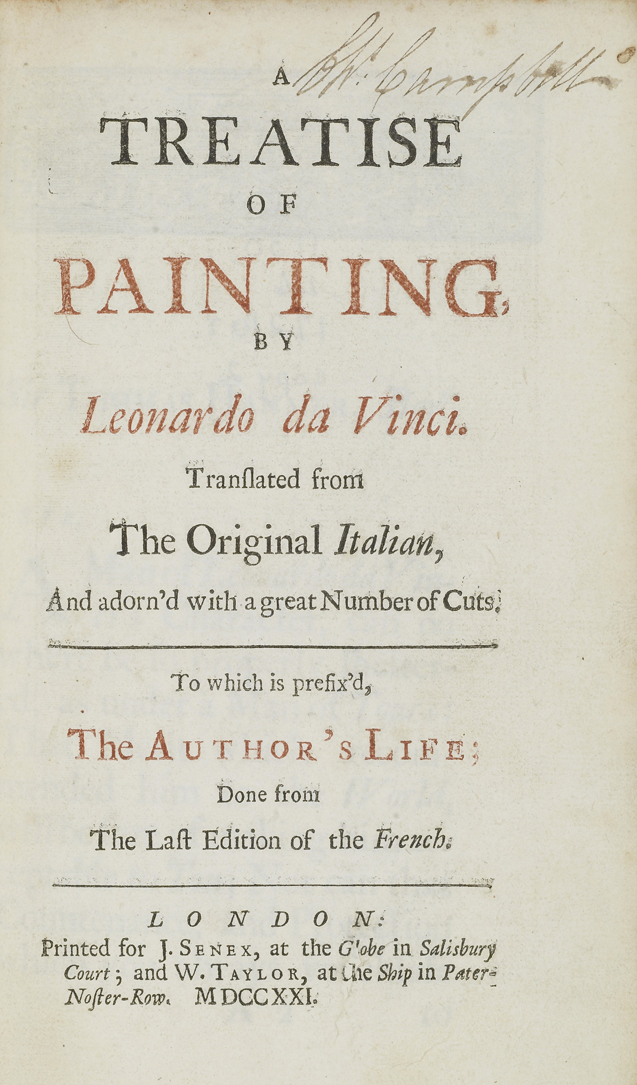
A Treatise on Painting, by Leonardo da Vinci
1721
Senex and Taylor, London
Chapter Display  |
|
The Figure, and Bounds of an Object, are never seen distinctly, either in its Lights or Shadows; but 'tis in the intermediate Parts, where neither the Light, nor the Shadow are considerable, that they are the most clearly distinguish'd.
Perspective, as it relates to Painting, is divided into three Principal Parts; the first of which consists in diminishing the Magnitude, or Dimensions of Bodies, suitably to their different Distances; the second, considers the weakning, or diminution of the Colours of such Bodies; and the third, is that which regards the Bounds or Contours of Bodies; teaching how to make them fainter, or more sensible, as the Objects are more or less remote: it depending on the Ease, or Difficulty of tracing the Bounds of Objects, that they appear more or less Distinct, or more or less Distant.
The Azure of the Air, is a compound Colour, form'd out of Light and Darkness: by Light, I mean, the Particles of Vapours diffused through the Air, and illumined by the Sun; and by Darkness the pure Air, not charged with any Heterogenous Particles, to receive and reflect the Light of the Sun: An instance of this, may be seen in the Air, interposed between the Eye and a Mountain, darken'd by means of the great Number of Trees wherewith it is beset, or viewed on that side turned from the Sun; for the intermediate Air, will here, be found of two Colours; whereof, that opposed to the obscure part of the Mountain, will be Azure; the other being different; and the more so, if the Light part of the Mountain be seen covered with Snow.
Among things equally obscure, and equi-distant; that will appear the most obscure which is found on the brightest Ground; and Vice versa.
That Figure, which shows the greatest share of Black and White, will appear with the greatest Degree of Relievo; 'Tis for this Reason, that I would advise the Painter, to cloath his Figures with the brightest and most vivid of his Colours; those which are obscure, being unable, either to give them a Relievo, or to make them visible at a Distance: The Reason of which, is, that every Shadow is obscure, either in a greater or less Degree, so that a Drapery, of a dim, obscure Die will appear too uniform, and alike in its Lights, and Shadows; whereas, in those, whose Colours are brighter, the Difference between their Lights and Shadows, will be the more evident, and the greater.